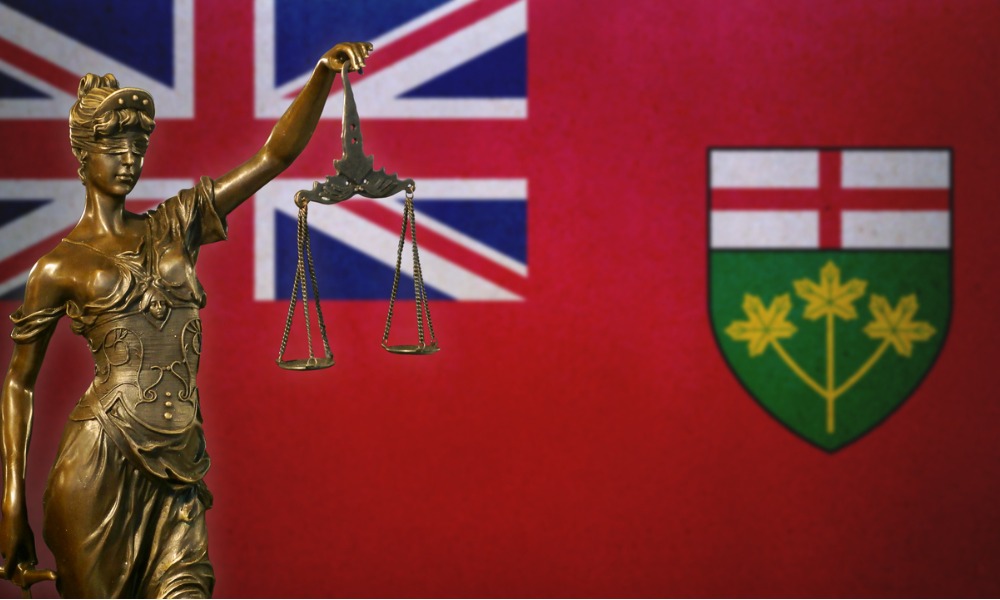Until recently, case law around additional insureds was vague in Ontario, but recent court decisions have been offering clarity as to what a contractor’s coverage is liable for when it comes to who they must defend and indemnify when working for a commercial establishment.

Until recently, case law around additional insureds was vague in Ontario, but recent court decisions have been offering clarity as to what a contractor’s coverage is liable for when it comes to who they must defend and indemnify when working for a commercial establishment. Lawyers say the new guidance will help these matters significantly in future disputes.
Issues with additional insureds often come up with slip-and-fall accidents where the landlord or occupier has retained a maintenance company, and under that contract, they were required to be named as an additional insured on the contractor’s insurance policy.
Frequently, the party named as an additional insured would request a defence from the insurer, who would then say that there was a lack of clarity or that the additional insured would have independent liability and would decline to provide the defence.
“Occasionally, there’s been pushback, but the courts have not been consistent in my view until [2017],” says Sudevi Mukherjee-Gothi, partner with Pallett Valo LLP in Toronto and head of the firm’s insurance defence group.
“[In 2017], there have been so many decisions that have come right out and have been very strong in saying, ‘Here’s the test, and here’s how we’re going to enact it.’”
Mukherjee-Gothi cites The Corporation of the City of Markham. v. Intact Insurance Company, 2017 ONSC 3150 as being paramount in setting out what the test is. In that case, which was a slip-and-fall case involving the City of Markham and a contractor obligated to keep sidewalks clear of snow, the judge ruled that the Intact insurance company was required to pay for the city to retain counsel of its choosing if it opted not to provide a defence.
“The courts have been very clear in saying you owe them a defence, and if you feel that you don’t owe them an entire defence or that there are portions that may not be covered, you can figure that out after the fact,” says Mukherjee-Gothi.
In cases like Markham, where there was a conflict, the courts ordered that the insured party is obligated to provide a defence, which means paying for separate counsel, if they believe that one lawyer can’t properly represent both parties.
“It does set out some very defined conditions that take away the uncertainty of trying to enforce what it means to be named as an additional insured under the policy, especially in these instances,” says Mukherjee-Gothi.
By ensuring that the defence is provided and that the costs are figured out after the fact, Mukherjee-Gothi says that it prevents cases from being held up by the disputes over who owes the defence.
“In some instances, they can be relatively small claims,” says Mukherjee-Gothi.
“If you’re looking at a claim that’s $50,000 and under, what is the cost benefit of having to fight and bring it to a motion and not be assured that coverage is going to be afforded versus contributing on an economic basis? These decisions now take that element of surprise out of the how the courts are going to decide.”
“For something that you think is fairly simple, this area has spun off a lot of litigation,” says Jay Skukowski, partner with Blaney McMurtry LLP in Toronto. “It’s always the simplest concepts in our minds that have such great nuances that we really have to delve into.”
Skukowski says that much of the case law confusion goes back to 2008, but pushback began a year later when it came to deciding indemnification.
In 2009, Skukowski was involved with Atlific Hotels and Resorts Ltd. v. Aviva Insurance Company of Canada, 2009 CanLII 24634 (ON SC), which dealt with application. In that case, a hotel guest slipped on an icy pathway at night at the Deerhurst Resort, and the Aviva insurance company refused to provide a defence to Deerhurst as the additional insured. It was ordered to provide a defence on the snow- and ice-related claims.
“We got a decision that everyone looked at and said, ‘Wow, this is fascinating, but is it applicable?’” says Skukowski. “We appealed it because we needed some clarity. We ended up resolving the case before the appeal was even heard, which is always the way it goes.”
Because that clarity didn’t happen and because the Atlific decision didn’t seem to comport with earlier decisions, there was confusion as to how to apply it.
Skukowski says that the Court of Appeal’s decision in Carneiro v. Durham (Regional Municipality), 2015 ONCA 909 referred to Atlific favourably because of the way in which Justice Edward Belobaba approached the matter so academically.
In the case, Durham was the additionally insured in a claim related to a traffic fatality after a contractor was alleged to have failed to clear the roads properly, and the insurance company refused to provide a defence. The Court of Appeal ordered the company to provide Durham with independent counsel at the company’s expense.
“You’re taking out an insurance policy, you’re putting someone else on it as an additional insured and, therefore, it would be a very hollow obligation that you’ve contracted for if we don’t allow for the duty to defend to exist,” says Skukowski, who notes that things have come full circle over the past decade.
Skukowski says he’s noticed in his practice that counsel agree to pick up the defence and worry about parsing out liability afterward and that, if it does go to trial, they deal with issues of indemnification at that point.
He adds that Carniero dealt with the issue of unfairness in everyone’s mind with the reallocation of defence costs.
“That was the approach that everyone wanted to get to, but it’s also the fairest because it also preserves the ability at the end of the day to recover the costs when it comes to issues of indemnification,” says Skukowski.
“There’s a very bright line after the Carneiro decision.”
Kelly Hart, partner with Williams Litigation Lawyers in Ottawa, says the decisions show that the courts are putting it to insurers to ensure that they will be held to the policies they are underwriting where there has been in effect a promise to defend and potentially indemnify additional insureds.
For plaintiff’s counsel, Hart says, the decisions reiterate the need to be careful in drafting a claim to ensure they are aware of the possibility of a potential dispute between the defendants and the insurer.
“What these all come down to is that the applications court judge is going to be looking at the pleadings to determine whether or not the duty to defend is being triggered on behalf of this additional insured, and they’re going to try to figure out what the true nature of the claim is and whether it’s being covered,” says Hart.







